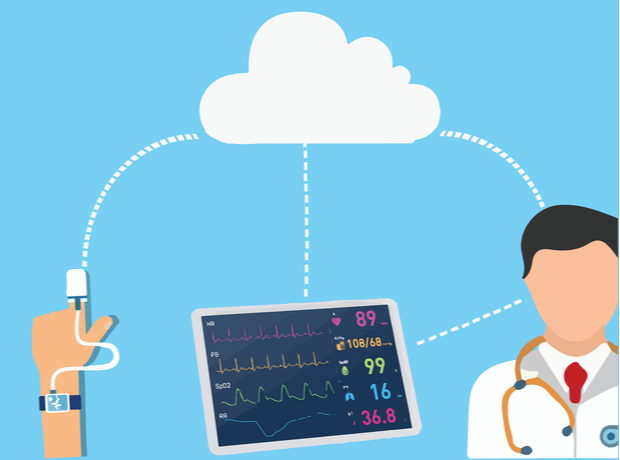Remote healthcare, also known as telehealth or telemedicine, is a rapidly growing facet of the healthcare industry that utilizes technology to provide medical services and support from a distance. It leverages communication tools, digital platforms, and data exchange to connect patients with healthcare providers and specialists, regardless of their physical location. This article explores the concept, benefits, applications, challenges, and future potential of remote healthcare, highlighting how it is transforming the delivery of medical services and improving access to healthcare worldwide.
Understanding Remote Healthcare
Remote healthcare encompasses a wide range of healthcare services delivered remotely, including medical consultations, diagnosis, treatment, monitoring, and patient education. It enables patients and healthcare providers to interact in real-time or asynchronously through various communication channels, such as video conferencing, phone calls, secure messaging, and online portals.
Key Benefits of Remote Healthcare
Remote healthcare offers several significant benefits to patients, healthcare providers, and the healthcare system as a whole:
a) Improved Access to Healthcare: Remote healthcare overcomes geographical barriers, making medical services accessible to individuals in rural or underserved areas. It also benefits patients with mobility limitations, enabling them to receive care from the comfort of their homes.
b) Convenience and Time Savings: Patients can consult with healthcare professionals without the need for physical travel, saving time and resources associated with commuting to healthcare facilities.
c) Cost-Effectiveness: For patients, remote healthcare can be more cost-effective than in-person visits, as it reduces transportation expenses and may lead to fewer hospitalizations and emergency room visits.
d) Continuity of Care: Remote healthcare facilitates ongoing communication between patients and providers, ensuring better continuity of care and early detection of health issues.
e) Rapid Response and Decision Making: Telemedicine enables quick access to medical advice, allowing healthcare providers to make timely decisions on patient care.
f) Reduced Waiting Times: With remote consultations, patients can often schedule appointments more conveniently, reducing waiting times compared to in-person visits.
g) Global Collaboration: Remote healthcare fosters collaboration among healthcare professionals worldwide, allowing them to share expertise and provide consultations across borders.
Applications of Remote Healthcare
Remote healthcare finds application in various healthcare settings and services:
a) Teleconsultations: Patients can consult with doctors and specialists virtually to discuss medical concerns, receive diagnoses, and obtain treatment recommendations.
b) Remote Monitoring: Patients with chronic conditions can use wearable devices and remote monitoring tools to track their health metrics. Healthcare providers can access real-time data to manage conditions proactively.
c) Telemedicine in Emergency Care: In emergency situations, remote healthcare allows rapid communication between medical professionals to facilitate triage and determine appropriate actions.
d) Mental Health Support: Remote healthcare has been increasingly adopted in mental health services, enabling patients to access counseling and therapy remotely.
e) Patient Education: Healthcare providers can use telemedicine platforms to educate patients about their conditions, treatment plans, and self-management strategies.
f) Second Opinion Consultations: Patients can seek second opinions from specialists located anywhere in the world without physically traveling to their location.
Challenges and Considerations
While remote healthcare offers numerous benefits, it also faces some challenges and considerations:
a) Technology Barriers: Access to reliable internet connectivity and appropriate technology devices can be a barrier, especially in rural and low-income areas.
b) Privacy and Security Concerns: Protecting patient information and ensuring secure data transmission are critical considerations in remote healthcare.
c) Regulatory and Licensing Issues: Telemedicine practices are subject to regional and national regulations, and providers must adhere to licensing requirements across state or international borders.
d) Digital Divide: Disparities in technology access and digital literacy may create inequalities in accessing remote healthcare services.
e) Diagnostic Limitations: Some medical examinations and procedures require physical presence, limiting the scope of remote healthcare.
f) Establishing Trust and Rapport: Building patient-provider trust and rapport may present challenges in a virtual setting compared to face-to-face interactions.
Future Potential of Remote Healthcare
The future of remote healthcare looks promising as technology continues to advance and healthcare systems adapt to evolving patient needs. Key developments and trends that will shape the future of remote healthcare include:
a) Advancements in Telemedicine Technology: Innovations in wearable devices, remote monitoring tools, artificial intelligence, and virtual reality will enhance the capabilities and accuracy of remote healthcare services.
b) Integration with Electronic Health Records (EHRs): Seamless integration of telemedicine platforms with EHR systems will enable efficient sharing of patient information and medical history.
c) Remote Surgical Interventions: Robotics and high-speed internet connectivity will pave the way for remote surgical interventions, expanding access to specialized surgical care.
d) Addressing Healthcare Disparities: Efforts to bridge the digital divide and improve technology access will ensure that remote healthcare benefits all segments of the population.
e) Mental Health Focus: Remote healthcare will continue to play a crucial role in expanding access to mental health services, addressing the growing global mental health burden.
f) Cross-Border Collaboration: International collaborations between healthcare institutions and professionals will enable expertise sharing and cross-border consultations.
Conclusion
Remote healthcare represents a transformative shift in the way medical services are delivered and accessed. With its potential to improve healthcare access, reduce costs, and enhance patient outcomes, remote healthcare is set to become an integral part of the modern healthcare ecosystem. Overcoming challenges and embracing technology advancements will be essential to realizing the full potential of remote healthcare, ultimately benefiting patients, healthcare providers, and society as a whole.

